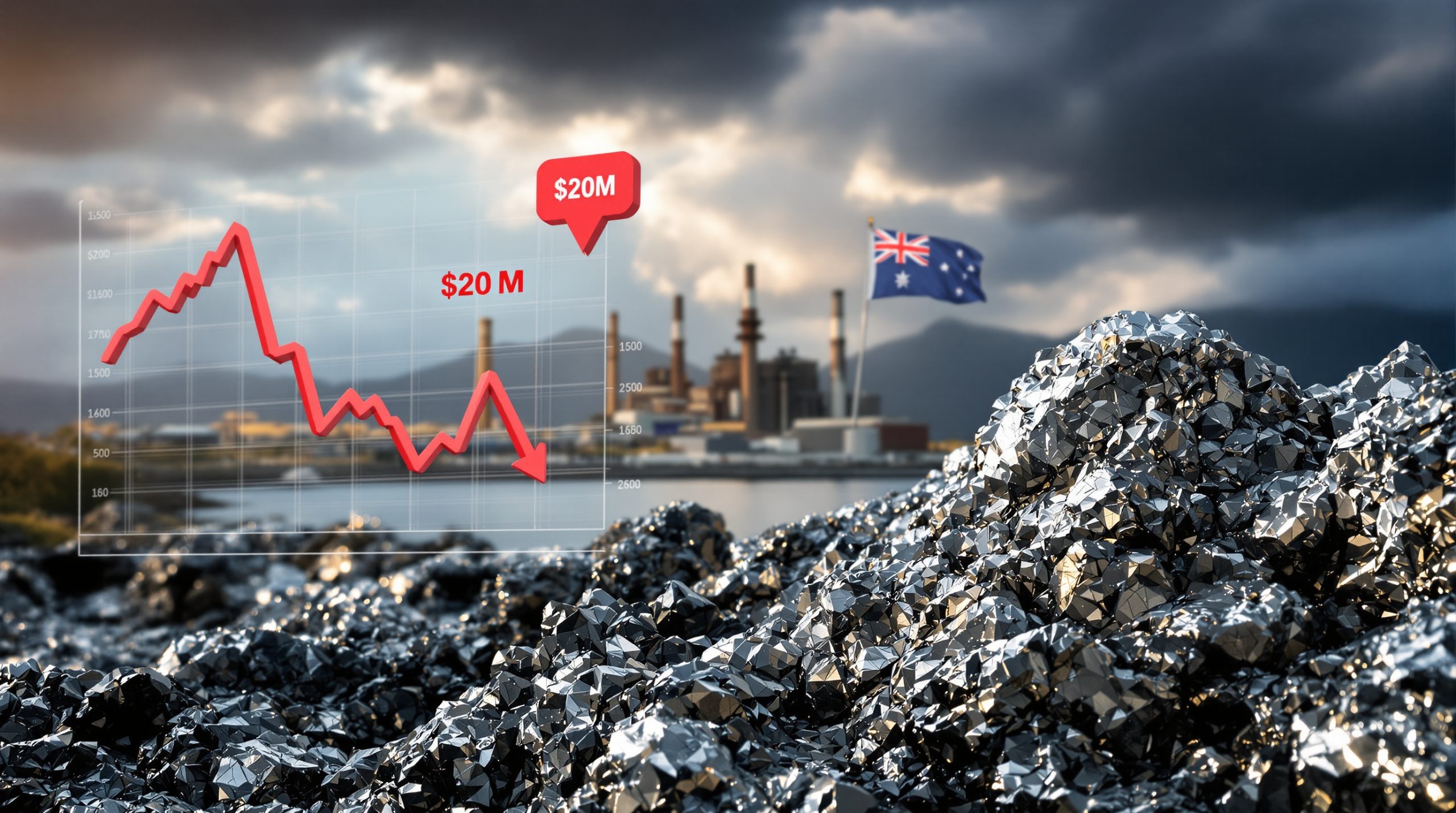Gold Price to Hit $5,000? Wheaton Precious Metals CEO's Bold Prediction
The precious metals market has reached a pivotal moment in 2025, with gold shattering the $4,000 per ounce barrier and establishing numerous record highs throughout the year. This remarkable rally has caught the attention of industry leaders, including Wheaton Precious Metals CEO Randy Smallwood, who recently made headlines with his Wheaton Precious Metals CEO gold price prediction that gold will surge past $5,000 within a year and potentially reach $10,000 by decade's end.
What's Driving Gold's Recent Record-Breaking Rally?
Gold has achieved an unprecedented 40 record highs in 2025 alone, reflecting a fundamental shift in market dynamics rather than speculative trading. The precious metal's surge past $4,000 per ounce represents a 25% climb from previous resistance levels, establishing gold as a global financial bellwether.
Multiple interconnected factors have created ideal conditions for gold all‐time highs analysis:
- Persistent geopolitical tensions across multiple regions creating safe-haven demand
- Historic central bank purchasing levels, with over 1,000 tonnes acquired annually since 2023
- Physical supply constraints emerging in major trading hubs
- Weakening US dollar trajectory affecting currency markets
- Declining real interest rates making non-yielding assets more attractive
- Growing sovereign debt concerns in major economies
The World Gold Council reported central banks purchased 1,037 tonnes in 2023 and 1,045 tonnes in 2024, the two highest annual totals on record. This unprecedented institutional demand has created a robust price floor even during temporary market corrections.
Physical gold markets are experiencing significant inventory pressure. Trading hubs report diminished stock levels, while premiums for physical delivery have risen substantially. This supply-demand imbalance creates structural support for sustained price appreciation even during market pullbacks.
Why Are Industry Leaders Turning Increasingly Bullish on Gold?
Randy Smallwood, CEO of Wheaton Precious Metals, has emerged as one of the industry's most vocal bulls. In an October 2025 Bloomberg Television interview, he stated: "I'm confident that we will see gold over $5,000 within the next year. It's a trajectory that could easily put it up to $10,000 an ounce before the end of the decade. It wouldn't surprise me at all."
This forecast represents a 25% increase from current levels and significantly exceeds mainstream institutional projections. Smallwood's prediction is particularly noteworthy coming from the leader of one of the world's largest precious metals streaming companies, with direct visibility into mining production and metal flows.
The medium-term case for gold strengthens as structural economic challenges intensify:
- National debt sustainability questions in major economies
- Central bank diversification away from traditional reserve currencies
- Ongoing geopolitical gold highs affecting trade patterns
- Resource nationalism impacting mining jurisdictions globally
- Production constraints from aging gold mines and declining ore grades
Long-term price targets reaching $10,000 by 2030 represent an extreme bullish case but highlight growing confidence in precious metals' role in a rapidly changing financial landscape. Such projections are based on acceleration of current trends rather than new catalysts.
What Makes the $5,000 Gold Price Prediction Significant?
Smallwood's $5,000 prediction stands out for several reasons beyond the headline number. As CEO of a company that provides upfront financing to miners in exchange for the right to purchase discounted future production, Wheaton has unique visibility into both supply constraints and producer economics.
The timeline of "within a year" suggests Smallwood sees current market dynamics accelerating rather than requiring new catalysts. This perspective contrasts with many institutional forecasts that project more gradual appreciation over multiple years.
Historical context is crucial for understanding this price target. Gold has already achieved multiple milestones in recent years, including breaking through psychological barriers that had previously served as resistance for decades. The metal's performance during periods of economic uncertainty has reinforced its status as a monetary asset rather than merely a commodity.
Comparing this prediction to previous gold bull markets reveals important differences. During the 2000s bull run, gold rose from under $300 to nearly $1,900 over a decade – a more than 600% increase. The current rally began from a much higher base, making percentage gains less dramatic but absolute price movements more significant.
How Would $10,000 Gold by 2030 Transform the Global Economy?
A scenario where gold reaches $10,000 per ounce would represent a fundamental reshaping of the global financial system. While some dismiss such forecasts as unrealistic, examining the economic conditions that would enable such a price reveals important insights about potential future developments.
For gold to reach $10,000, several major shifts would likely occur:
- Significant erosion of confidence in fiat currencies
- Central banks substantially increasing their gold reserves as percentage of total assets
- Major restructuring of international trade settlement mechanisms
- Formal or informal linking of monetary policies to precious metals
- Severe constraints on new mine supply despite price incentives
The implications would extend far beyond the metals market. Traditional asset allocations would require recalibration, with precious metals potentially moving from alternative to core portfolio components. Banking systems would likely develop new products and services centered around physical gold ownership and transfer.
For investors, understanding the potential signposts on the path to such extreme valuations provides valuable insight even if the ultimate price target proves optimistic.
What's Happening in the Physical Silver Market?
While gold captures headlines, silver has staged an even more dramatic percentage rally, approaching the historic $50 per ounce mark last reached briefly in 1980 and 2011. As of October 2025, silver trades at $47.26 per ounce, representing a significant breakout after years of underperformance relative to gold.
According to Smallwood, the silver market squeeze has been operating in a persistent deficit position: "We've been operating in a deficit mode in the silver market for a long time. Vaulted silver has been feeding the deficit but now those vaults are 'running dry'."
This supply deficit results from multiple factors:
- Industrial demand growth outpacing new mine supply
- Vaulted silver inventories experiencing rapid depletion
- Solar and electronics sectors consuming increasing volumes
- Investment demand surging alongside gold's rally
The gold-silver ratio (the number of silver ounces needed to purchase one ounce of gold) has compressed from over 90:1 to approximately 84:1 based on current prices. During previous precious metals bull markets, this ratio has often compressed to 50:1 or lower, suggesting silver may have further outperformance potential if historical patterns hold.
The physical market situation appears particularly acute. Mining.com reported in October 2025 that silver was experiencing "a historic supply squeeze in London vaults," highlighting the growing disconnect between paper and physical markets.
How Do Streaming Companies Benefit from Rising Metal Prices?
Precious metals streaming companies like Wheaton Precious Metals offer unique investment characteristics that provide leveraged exposure to rising prices without many of the operational risks associated with mining.
The streaming business model involves providing upfront capital to mining companies in exchange for the right to purchase a percentage of future metal production at predetermined, discounted prices. This creates several advantages during periods of rising metal prices:
- Fixed acquisition costs while selling prices increase
- Operating margin expansion without corresponding cost inflation
- Diversified asset exposure across multiple mining operations
- Dividend growth potential directly linked to metal prices
- Reduced operational and environmental risks compared to miners
Wheaton "has benefited from the surge in bullion prices as investors flock to precious metals, driven by mounting geopolitical risks and tight physical supply," according to Mining.com's October 2025 report.
While miners face cost inflation for labor, equipment, and energy during bull markets, streamers maintain their fixed acquisition costs per ounce, allowing for superior margin expansion as prices rise. This business model creates a form of operational leverage without the corresponding downside risks.
What Could Derail the Bullish Gold Scenario?
Even the strongest bull markets experience corrections and potential derailment factors. Several developments could temporarily interrupt gold and silver's upward trajectory:
- Sharp increases in real interest rates affecting opportunity costs
- Significant US dollar strengthening reducing gold's appeal for non-dollar investors
- Coordinated central bank selling (though currently considered unlikely)
- Rapid resolution of major geopolitical conflicts reducing safe-haven demand
- Substantial new mine supply coming online (though development timelines remain extended)
Technical analysis suggests even strong bull markets typically experience 10-15% retracements after extended rallies. These corrections often establish new price floors before continuation, creating buying opportunities for those with longer-term conviction.
Investor sentiment indicators provide warning signs of potential short-term tops. When retail participation reaches extreme levels, media coverage intensifies, and options markets show heavily skewed positioning, markets often experience at least temporary exhaustion.
When evaluating price predictions, it's important to recognize that industry executives like Wheaton's CEO have valuable insights from their market positioning but also potential biases favoring their business interests. Their forecasts should be considered alongside institutional analyst projections, technical analysis, and macroeconomic indicators for a balanced perspective.
How Are Central Banks Influencing the Gold Market?
The transformation of central banks from net sellers to aggressive buyers represents one of the most significant structural shifts in the gold market. The World Gold Council reported central banks purchased 1,037 tonnes in 2023 and 1,045 tonnes in 2024, the two highest annual totals on record.
This institutional buying provides critical support for gold prices through several mechanisms:
- Removing substantial physical supply from market circulation
- Signaling confidence in gold as a reserve asset to other institutions
- Creating price floors during market corrections
- Reducing available supply for industrial and investment demand
The diversification away from US dollar dominance particularly benefits precious metals:
- Emerging market central banks leading acquisition trends
- Alternative payment systems gradually reducing dollar dependency
- Commodity-backed currency discussions gaining traction
- Growing recognition of gold's role in financial stability frameworks
Central bank policy shifts have created a supportive environment for precious metals. Interest rate trajectories, balance sheet management decisions, and inflation targeting frameworks all influence gold's relative attractiveness as a reserve asset. Recent policy developments have generally favored non-yielding assets like gold by reducing opportunity costs.
What Supply Factors Are Supporting Higher Precious Metals Prices?
The gold mining industry faces significant production challenges that constrain supply growth despite price incentives:
- Peak production concerns as major discoveries become increasingly rare
- Grade decline in aging deposits increasing per-ounce production costs
- Exploration success rates declining despite increased spending
- Permitting and regulatory hurdles extending development timelines
- Capital intensity rising for new project development
Silver's dual role as both precious and industrial metal creates unique supply-demand dynamics. Industrial applications continue expanding in:
- Renewable energy, particularly solar panel manufacturing
- Electronics and electrical systems requiring high conductivity
- Medical and antibacterial uses leveraging silver's properties
- New technological applications emerging regularly
Resource nationalism and regulatory uncertainty affect supply development globally. Increasing royalty and tax regimes, stringent environmental permitting requirements, community relations challenges, and political instability in key producing regions all contribute to constrained supply growth despite price incentives.
These supply limitations create structural support for prices even during temporary demand fluctuations, as the market requires higher price signals to incentivize marginal production increases.
FAQ: Gold and Silver Investment Considerations
How does physical gold ownership differ from mining stocks?
Physical gold provides direct exposure to metal prices without operational risk or counterparty risk. The metal doesn't generate income but serves as wealth preservation and potential appreciation. In contrast, mining stocks offer operational leverage to gold prices through expanded profit margins when prices rise, but carry company-specific risks including production challenges, cost inflation, and geopolitical exposure.
What percentage of a portfolio should be allocated to precious metals?
Traditional financial planning suggests 5-10% allocation to precious metals as a diversification tool. However, in periods of heightened economic uncertainty or inflation concerns, some investors increase this to 15-20%. The allocation is typically split between physical metals and mining equities based on individual risk tolerance and investment objectives.
How do streaming companies like Wheaton Precious Metals generate returns?
Streaming companies provide upfront financing to miners in exchange for the right to purchase a percentage of future production at predetermined discounted prices. According to Mining.com, Wheaton "provides upfront financing to miners in exchange for discounted future output." This business model provides exposure to precious metals price appreciation while limiting operational risks associated with direct mining activities.
What factors could push gold beyond $5,000 per ounce?
According to Smallwood, "mounting geopolitical risks and tight physical supply" are current drivers, with his prediction based on continuation and acceleration of these trends. Additional factors include accelerating de-dollarization by central banks, persistent inflation above central bank targets, declining mine production, and increased investment demand. Severe financial system stress or currency crises would further accelerate this trajectory.
How reliable are price predictions from industry executives?
Industry executives have valuable insights from their market positioning but also potential biases favoring their business interests. Their forecasts should be considered alongside institutional analyst projections, technical analysis, and macroeconomic indicators. Historical accuracy of executive predictions varies widely, with timing often proving more challenging than directional correctness.
The precious metals market stands at a pivotal moment with structural forces suggesting continued strength. While exact price targets and timelines remain subject to debate, the underlying trends supporting 2025 gold market surge appear firmly established. Investors should consider their own time horizons, risk tolerance, and portfolio objectives when determining appropriate exposure to this dynamic sector and explore various gold investment strategies to optimize their returns.
Want to Profit from the Next Major Mining Discovery?
Experience the power of Discovery Alert's proprietary Discovery IQ model, which instantly identifies significant ASX mineral discoveries and transforms complex data into actionable trading opportunities. Visit the dedicated discoveries page to understand how historic mineral discoveries have generated substantial returns for early investors.




